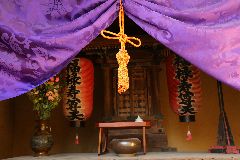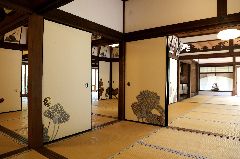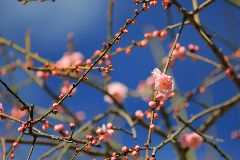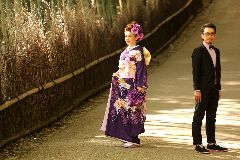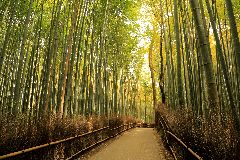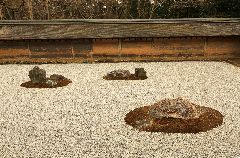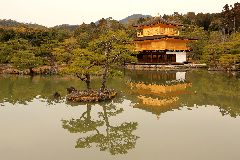Close encounters with Japanese kind II.
Japan. Japan! Gardens, religions, manga, and second impressions from Land of The Rising Sun. Kyoto, part 2.
I will not try to write about all the temples I have visited – it would be useless and utmost boring – but let me tell you there was a LOT of them. I will just speak of 3 interesting things:
1) Shintoism and Buddhism
When I opened Lonely Planet the statistics about religious demographics said something like: 2% Christians, 60% Shinto, 80% Buddhist. WHAT? Stupid Lonely Planet, such a typo or mathematical ignorance? Don’t they see that the sum is 142%? Some time after I casted my wrath of mathematician onto Lonely Planet I read the detailed “Religion” chapter and I understood. It was not error. Japanese are dual-religious :-) Most of them claim to be also Shinto and also claim to be Buddhist. In reality, they are probably pretty much atheist.
I did not know anything about Shintoism before I arrived to Japan, except the fact that it’s the original Japanese religion which was born and raised before arrival of Buddhism. The basic facts that I learned about it in Japan are:
a) It worships natural phenomena, such as sun, mountains, trees, … Some of them were “deified” into gods, but in its core it is animism. Foxes and deer are of special value, being messengers of gods.
b) There are no Shinto temples. They use shrines.
Although architecture is similar, it’s very easy to distinguish Buddhist temple from Shinto shrine. Shinto shrines are always orange. Blazing orange. And there are no deities on its altars. Buddhist temples are white and dark brown with golden Buddha somewhere around.
c) Your duties of Shinto practitioner are simple: when you arrive to a shrine you purify your body and soul by water that you pour onto yourself by bamboo ladles from tiny fountain or stream at the entrance of the shrine, they you come to the shrine(s) and pull a rope with a oversized jingle bell attached to it to wake up the god(s), you toss a coin into donation box, clap your hands twice and make your wish. Done, wish granted.
Buddhism is more demanding. Instead of jingle bells they use gongs, but there are reserved for special religious ceremonies, not for plebs. Tossing of coin into donation box is not enough (although highly appreciated, almost compulsory), as you are expected to meditate, or at least chant some mantras or show your devotion to the Buddha in some other way.
2) Simple emptiness, empty simplicity
All Buddhist temples look almost the same. This is hardly surprising, western Europe’s churches are all similar as well and the same goes for Hindu temples. But what makes them distinctively different from temples in other places on earth is their simplicity and austerity. One simple open space, always rectangular without any niches or attachments, walls from paper, sliding doors, tatami mats on the floor (tatami are carpet-like mats from bamboo leaves), few chairs and gongs for priests, no statues or any other decorative objects, except in the altar, which swarms with golden decoration and golden Buddha(s), all carefully aligned into perfect layout. Over-decoration of the altars strikingly contrasts with emptiness of the hall. But the crucial element is this: the strict simplicity of the halls is a common element of all Japanese (historical) buildings. The look of feel of temples is exactly the same as look and feel of Shogun’s royal palace, and it’s exactly the same as look and feel of historic houses of middle-class and even of hostels. The difference is only in size of the rooms and grandeur of paintings on walls. Shogun’s bedroom might be 10 times bigger than that of a Japanese trader, but otherwise their houses are almost identical. This is really different from the contrast one might see in Europe’s aristocratic villas and houses of folks in villages. Zen Buddhist doctrine of emptiness and simple beauty is omnipresent in Japan, touching on every detail of life. Why build a garden full of exotic flowers and plants, when they can rake gravel and put 5 rocks in it? True master of Zen must see the same beauty in dead stone among dead gravel, as he would see in Europe’s tropical orangery. Paintings of pine tree bent by ages of winds, few bamboos and mountains reaching from mist, with occasional tiger or crane are preferred to Virgin Mary nursing Jesus with whole gang of ornamental angels, doves and other heavenly signs around. Instead of gothic’s reaching into heavens and embodiment of god into every over-decorated arch, pillar and tinted glass, the Buddhist temple halls are down-to-earth rectangular made of simple wood and paper. This uniformity of Japanese interiors is striking and its relentless repetition makes its trick: it shouts (or more appropriately whispers) “live simply”.
3) Gardens mania
Many temples are surrounded by beautiful gardens, sometimes composed of only rocks and stones, and sometimes with dramatically shaped trees, thick moss and flowers. But from all the temples, the leaders of the pack are Golden and Silver pavilions. Both of them were retirement villas of highest aristocracy which donated them to the church after their deaths. They are simple villas, just 2 story buildings, surrounded by grand gardens. The harmony of the place is mind blowing and if I had a retirement villa like that, I wouldn’t be scared of retirement at all :-) The relative humbleness of then again strikingly contrasts with Versailles or Forbidden City.
One truly Japanese sight was Arashiyama – a bamboo grove. Thousands of bamboos growing somewhat in lines, give psychedelic illusion of infinity to puzzled eyes.
There are 27 UNESCO listed sights in Kyoto. 27! That should give you an idea how much is there to see. I visited most of them. It almost ruined me :-) While Japan is not as expensive as everyone thinks, and compared to Australia is downright cheap, for every temple and garden you have to pay 4-5 EUR entrance, and so most of my money was not drained by accommodation or food as I had expected but by sightseeing. By the way, for those of you, who think that Japan is out of their budgets, think again. Hostel in Kyoto 11 EUR a night. It was one of the cheapest in the town, but located in best possible location, and it was really good hostel. In Australia 20 EUR is minimum for the worst of the hostels with drunken people vomiting all around you, and in Europe finding a hostel for 11 EUR would be challenge as well. Simple but good food in a real (not fast food) restaurant: 7 EUR. That’s the price of BigMac in Australia. Obviously Japan is not Thailand, or Vietnam when it comes to the cost, but it’s not out of reach either. Well, except train tickets. Those are really expensive.
Between running down the UNESCO list and chasing girls in kimonos (to take pictures) I continued in discoveries of Japanese peculiarities. Sakura and green tea flavored ice cream. Panasonic toilets with 20 buttons I had no idea what they serve for. Something like Japanese burrito – with chopsticks. I consider myself decent user of chopsticks (I love Asian food), but for Christ sake, how are you supposed to ear burrito with chopsticks? All restaurants have plastic replicas of their menu in the windows (which is the best idea ever, you can simply choose by looking at 99% precise replicas and then order by just point a finger, without a single word in Japanese). I went to a sushi train restaurant, where you can either pick what is running down the track or order via iPad (again, you just click on a picture and in 1 minute it’s in front of you). All fine, but I couldn’t see wasabi anywhere around. I opened a little box near me and I spotted green powder. I was like WHAT? Instant wasabi? I think I had seen this kind of shit before, in the worst sushi fast foods, where you put bit of instant wasabi into your soya sauce but THIS barbarism in Japan, homeland of sushi? Well, I thought that it simply must be really cheap place (which it was) and so I sighed and throw a bit of that green powder into my soya sauce, ready to dip my first piece of sushi into it. And in that very moment a teenage waitress rushed to me and started laughing: Mister, mister! That no wasabi! That is green tea powder! Hahaha. Sorry mister. Wasabi here, sorry. And she handed me a mountain of wasabi on a tray. Great, I must have looked like a member of Germanic tribes brought by mistake to Ceasar’s Rome. Total barbarian and idiot :-D
Let’s continue. I found a shop with Japanese comics – manga. At the back of the room I found was I was looking for. I didn’t want to buy anything, but I knew that brief look at this is just as quintessential part of visit to Japan as eating sushi or visiting Zen temples: manga porn. I checked few issues. All of them featured drawn girls looking 10 – 14 years old, performing all bestialities (un)thinkable. While portfolio of perversities was huge, one genre dominated. Girls drowning in sperm, with semen coming out of all their body openings including ears, and in this sperm-apocalypse they were getting their final fix by sucking condom leftovers and looking high. Fascinating this Japanese sense of sexiness… By the way, do you know you can buy white business shirts and ties in a 24/7 convenience stores? Probably just in case that you get too drunk and vomit all over you.
Want more Japanese unique craziness? Wait, it’s coming.
